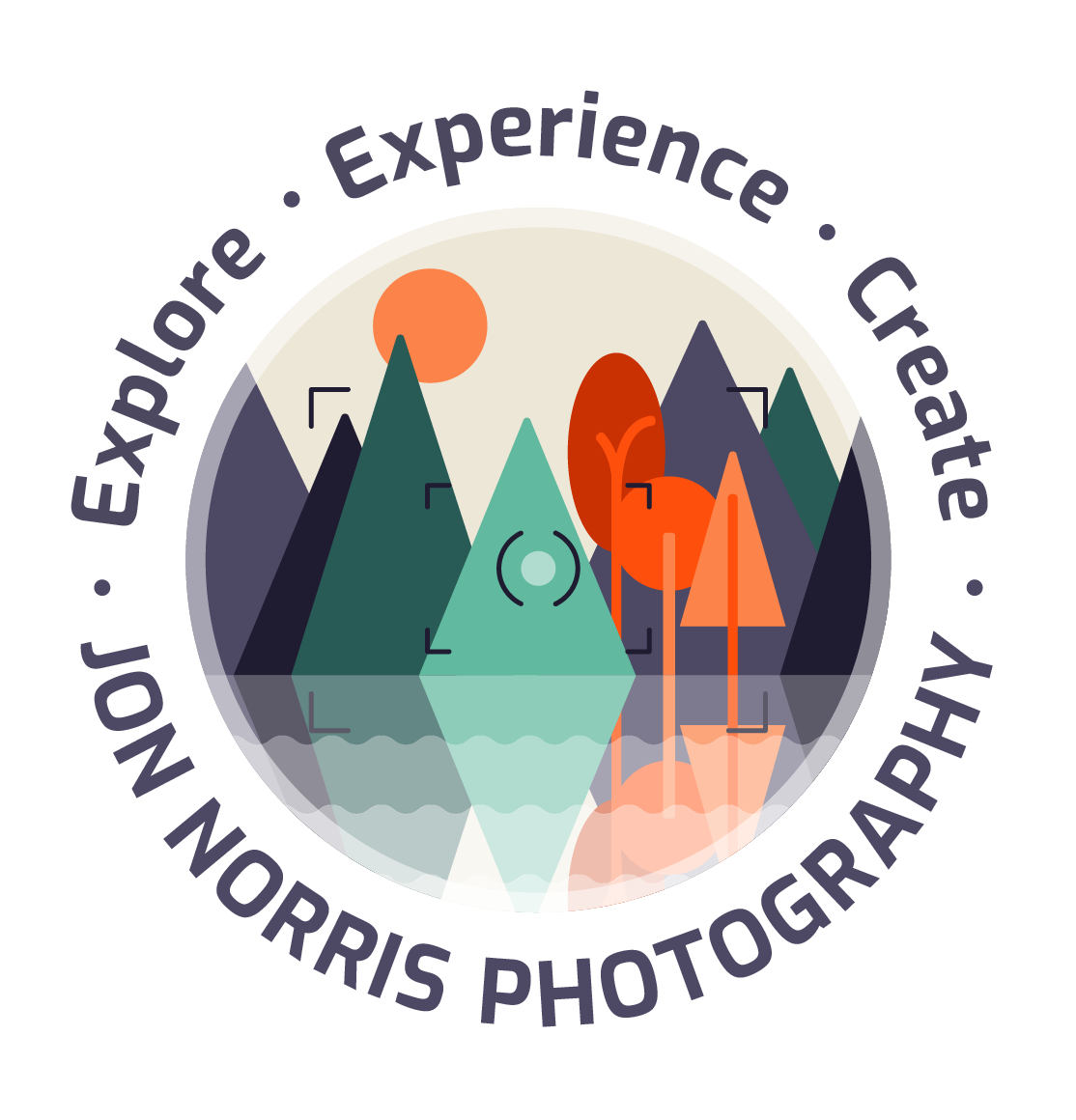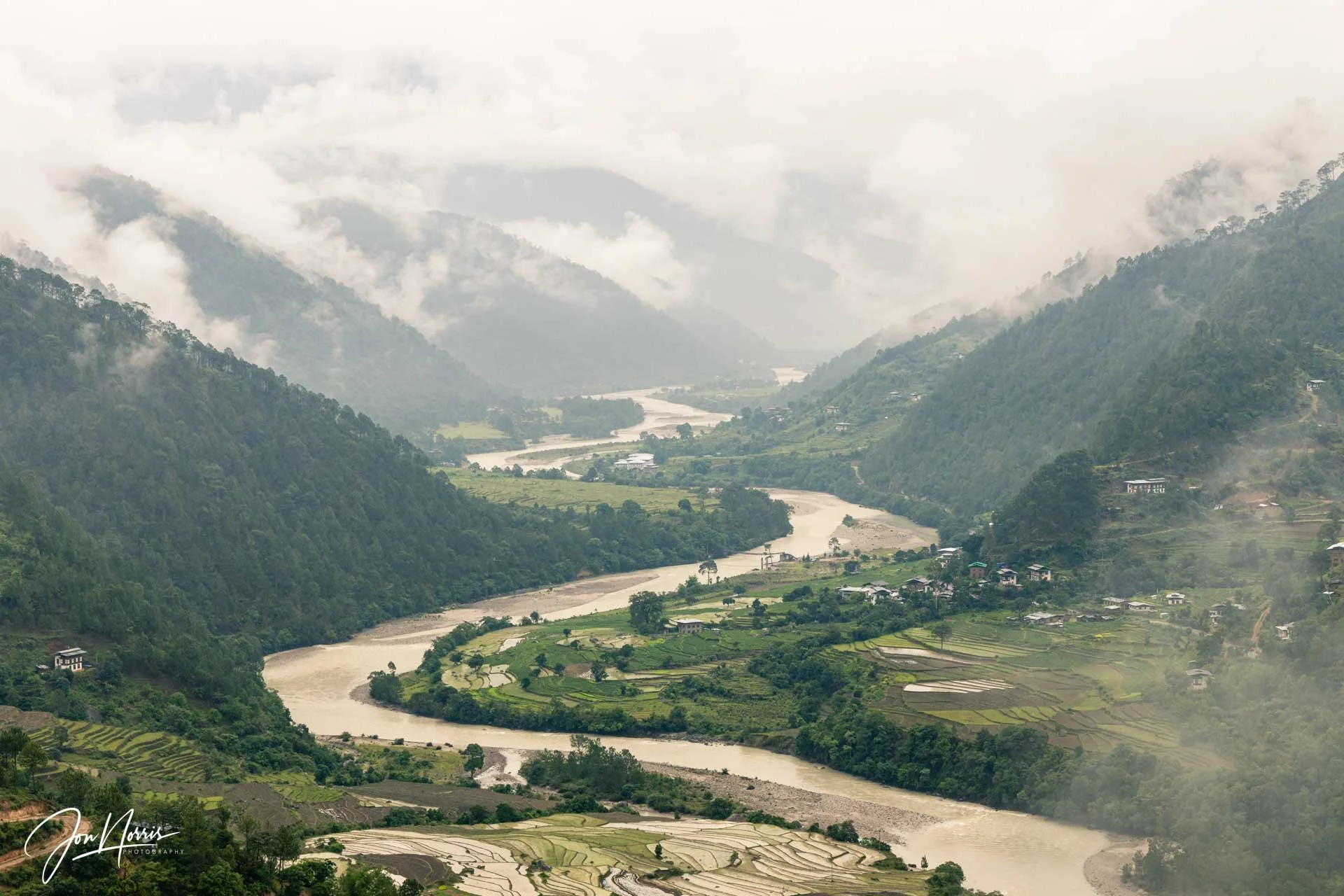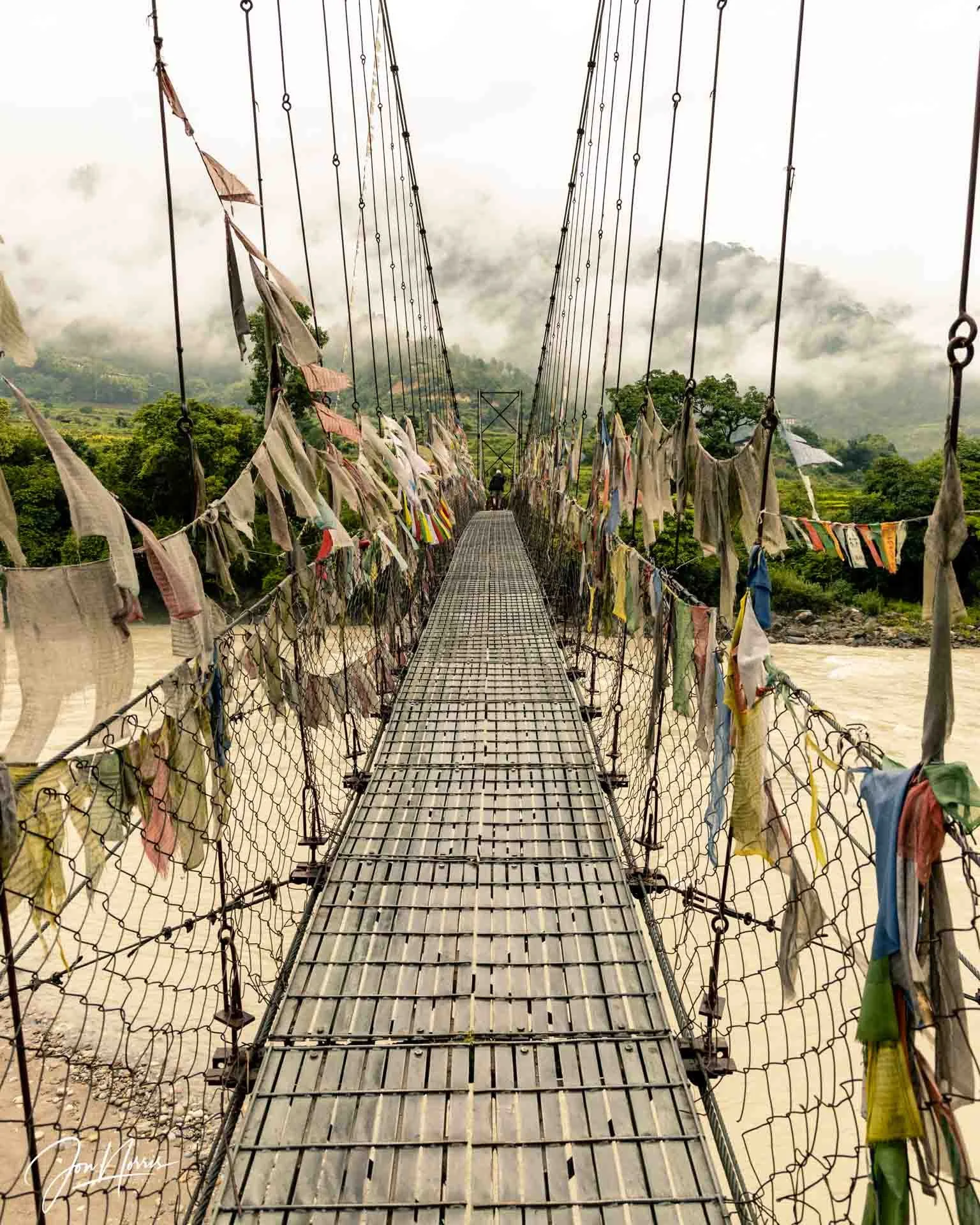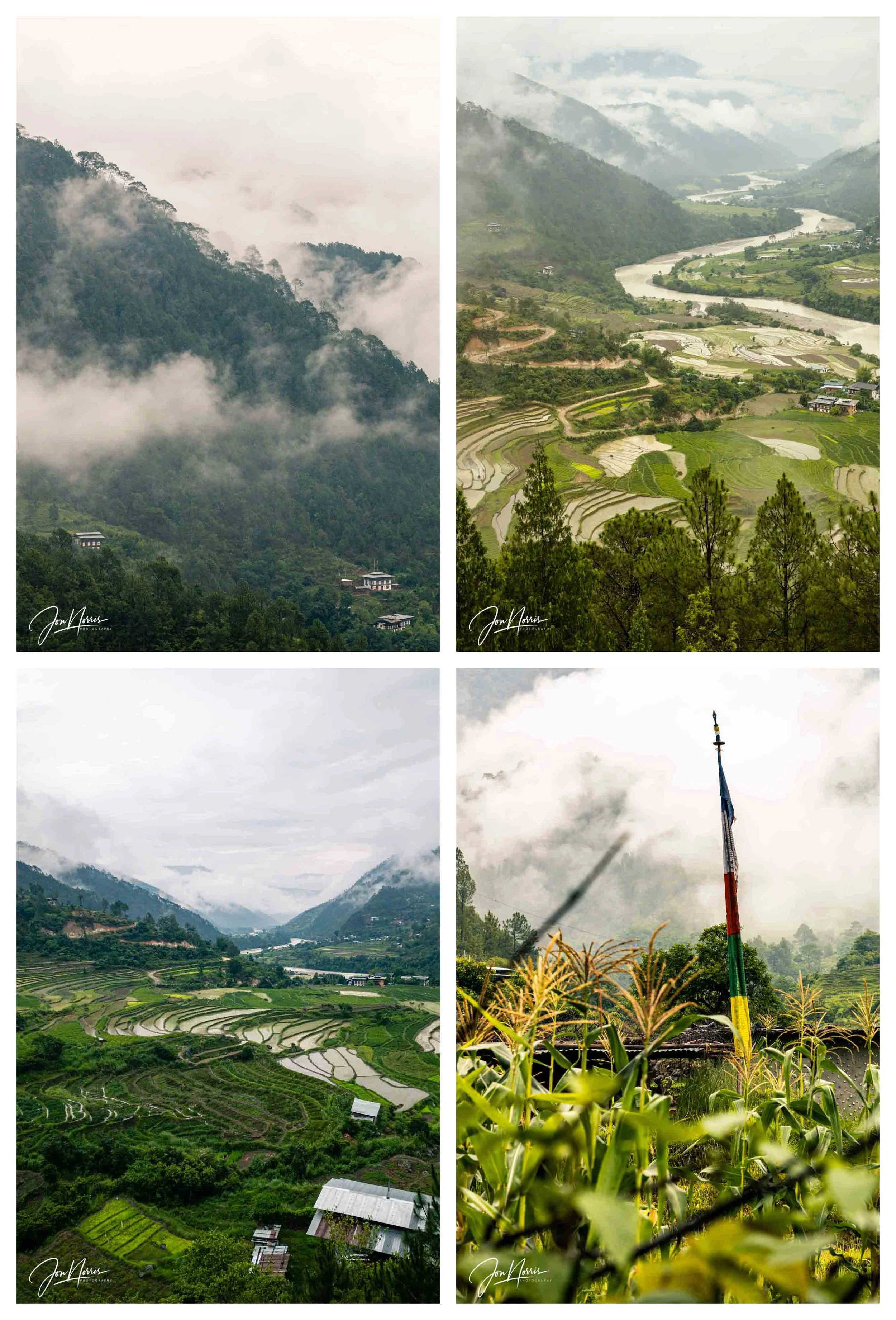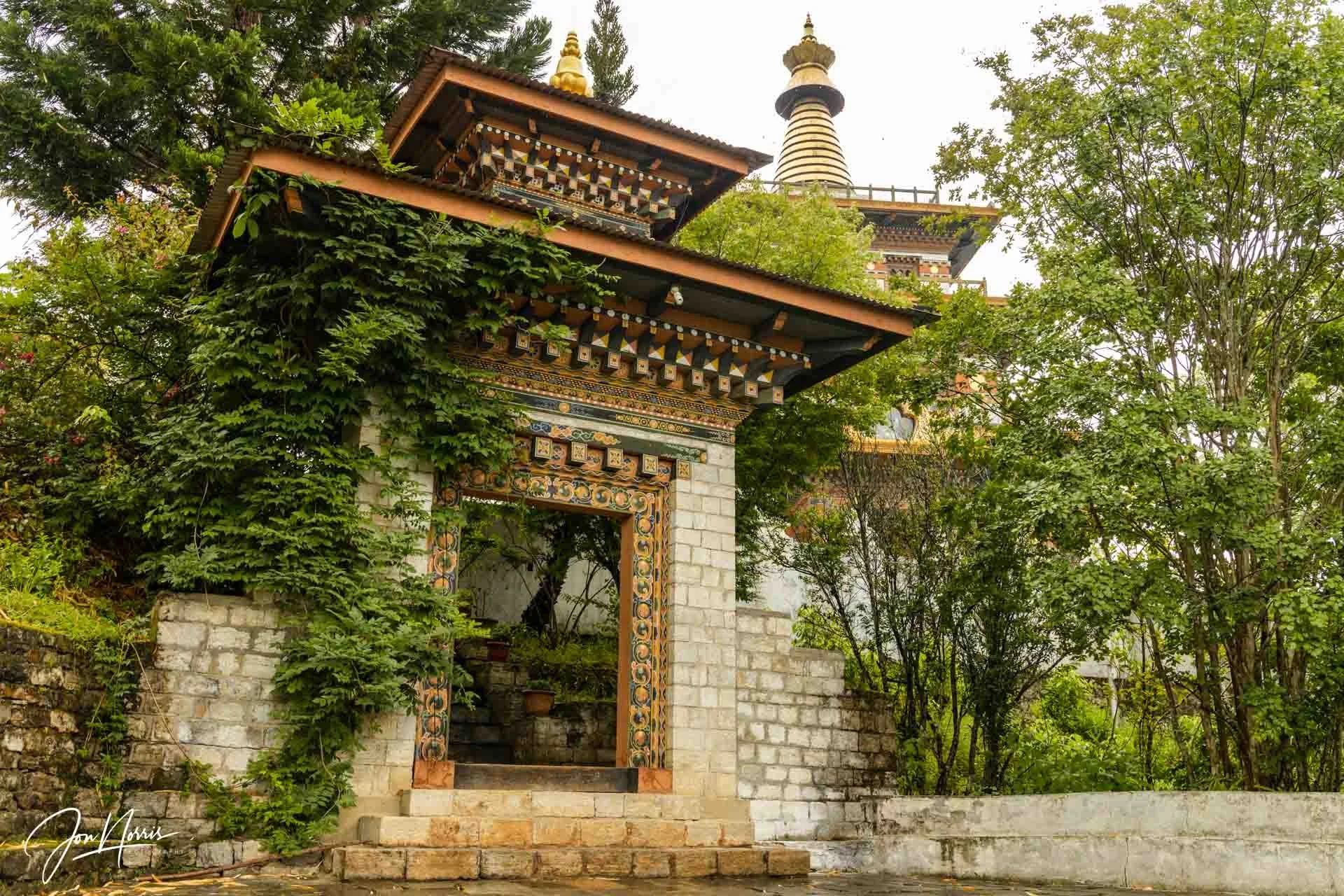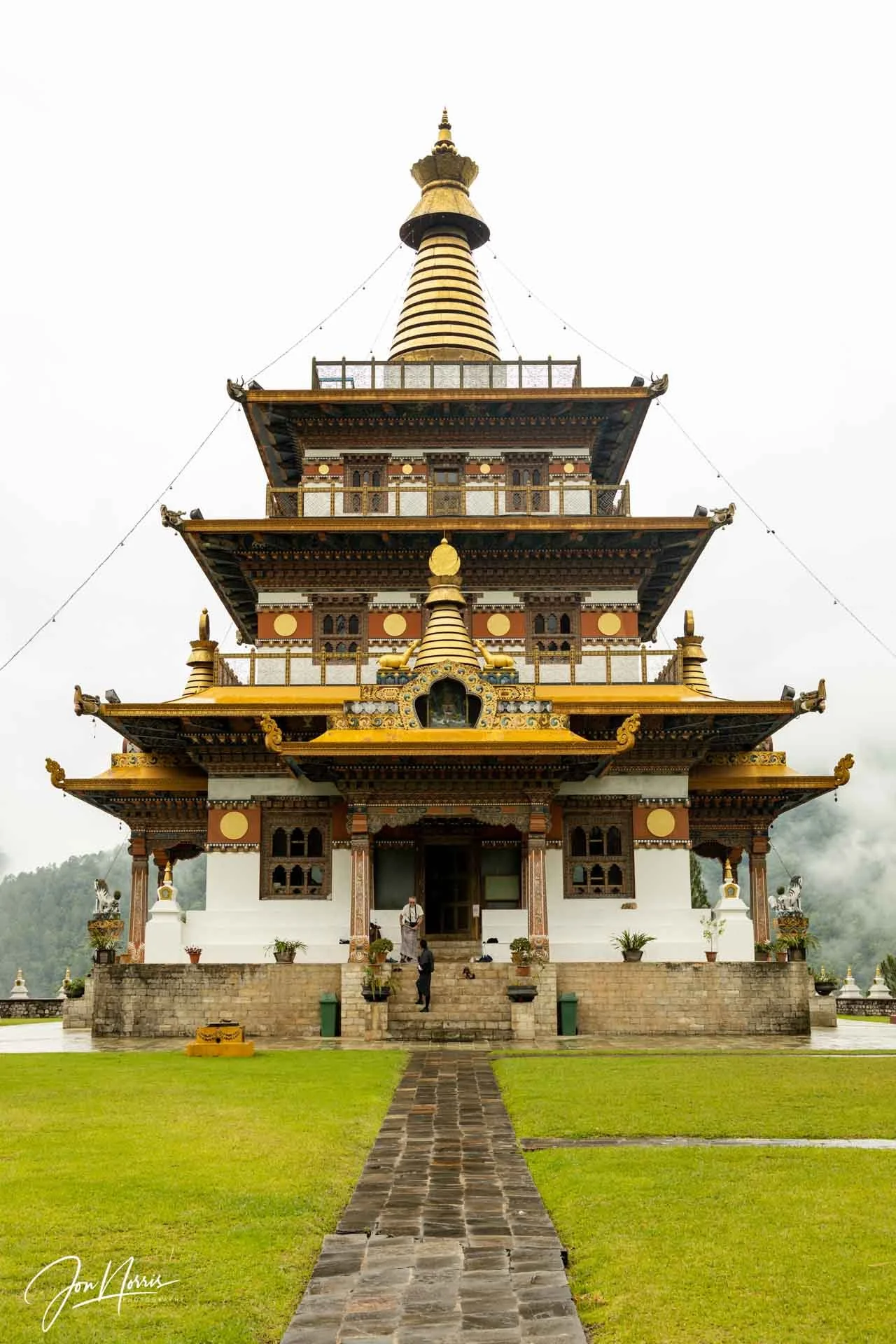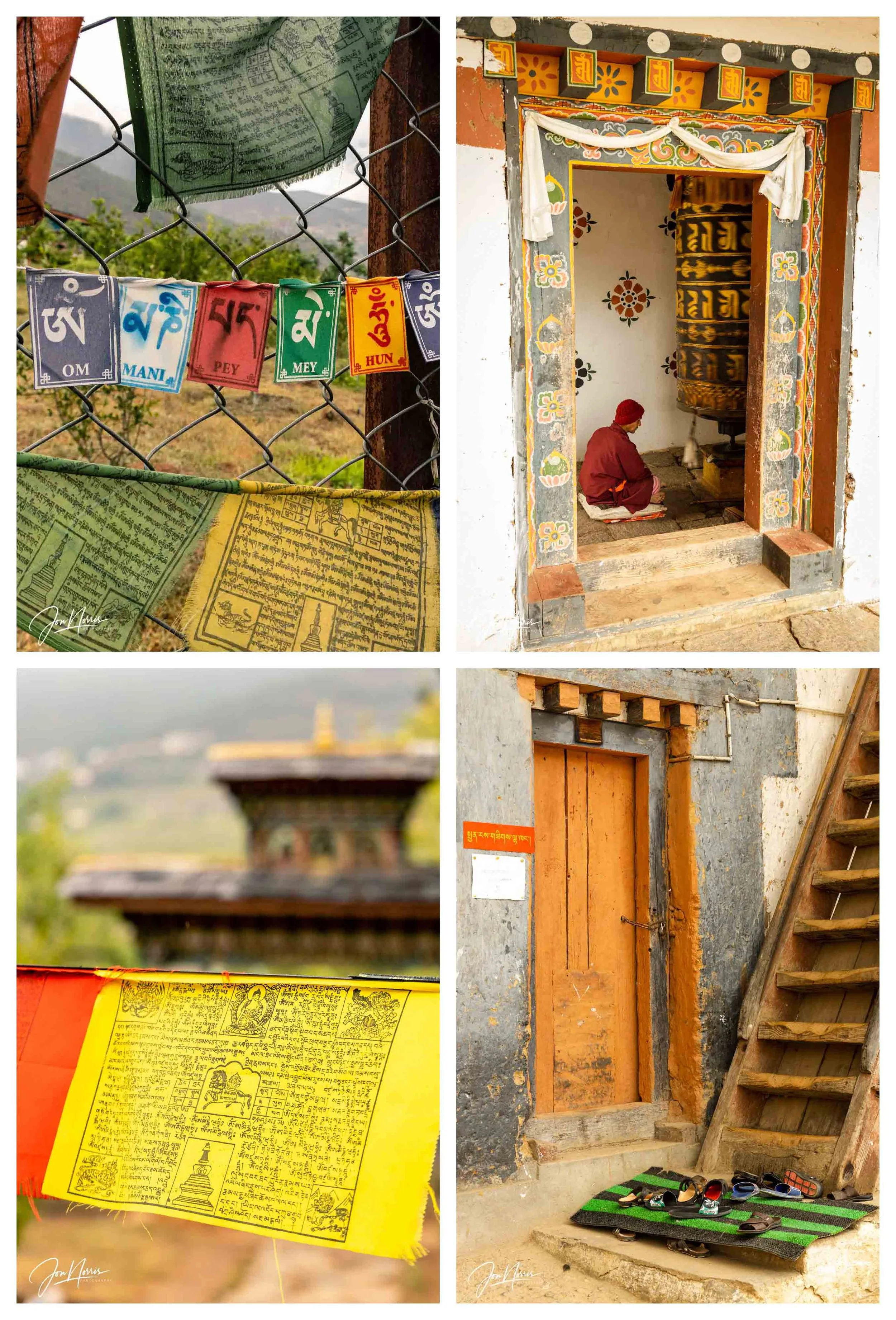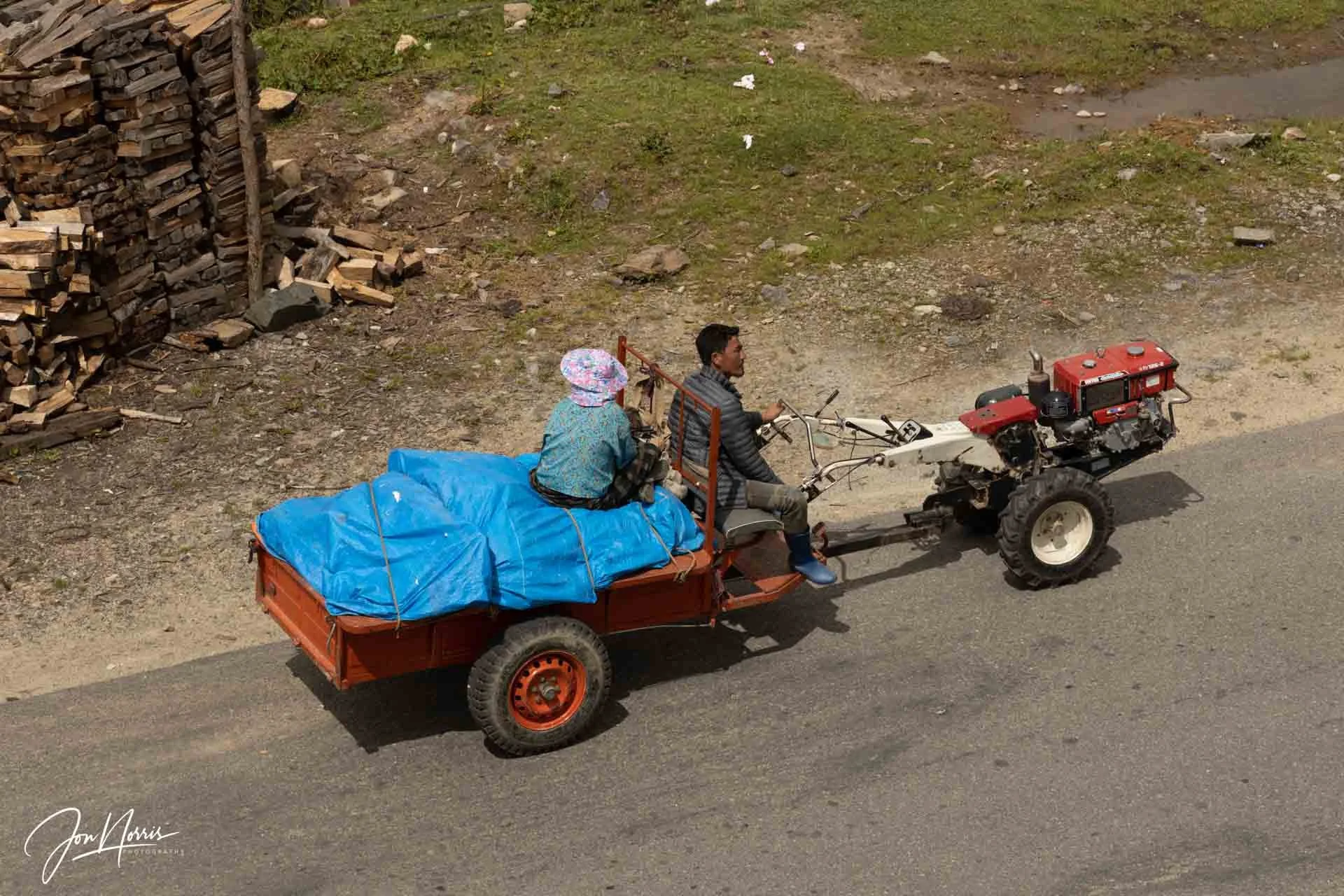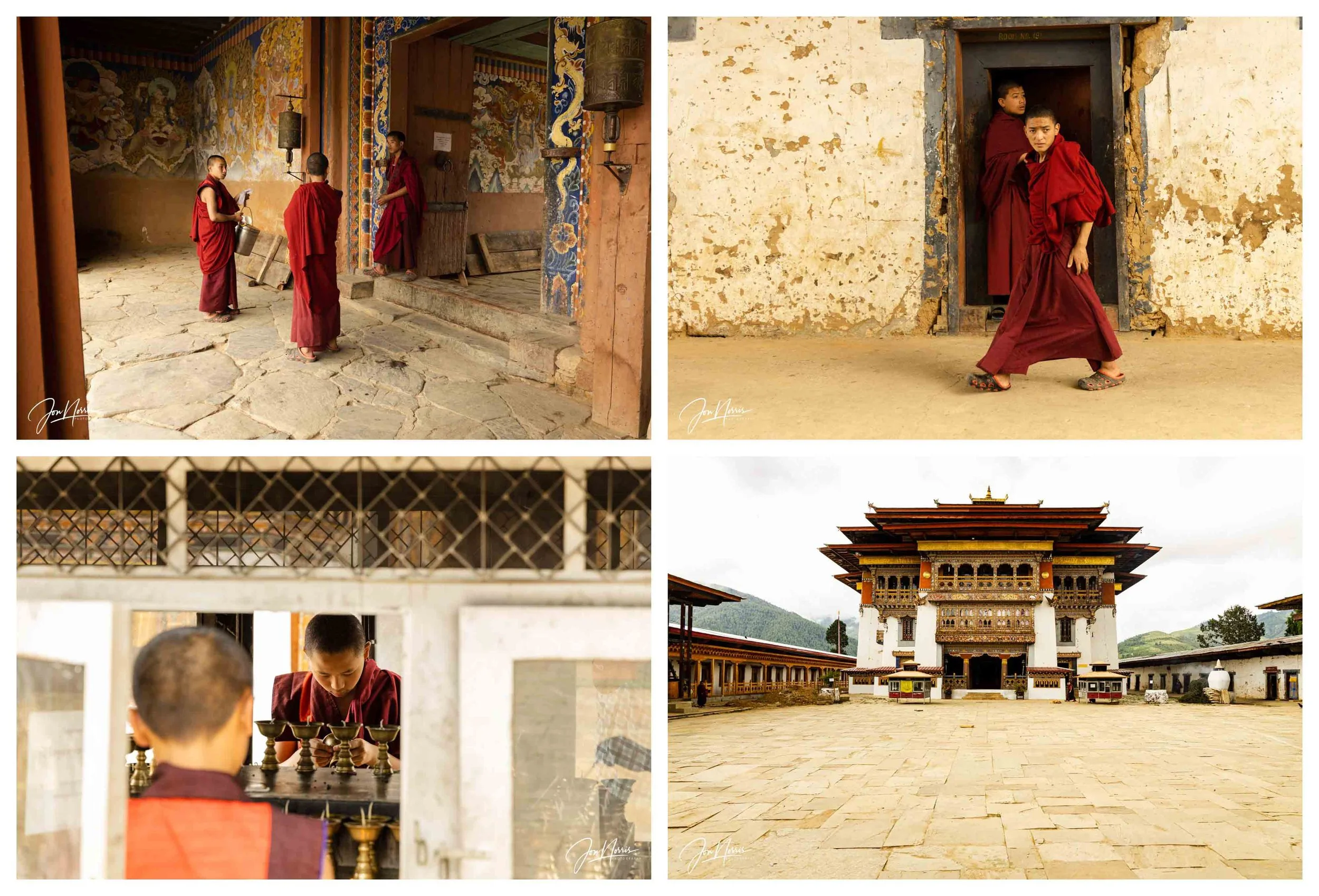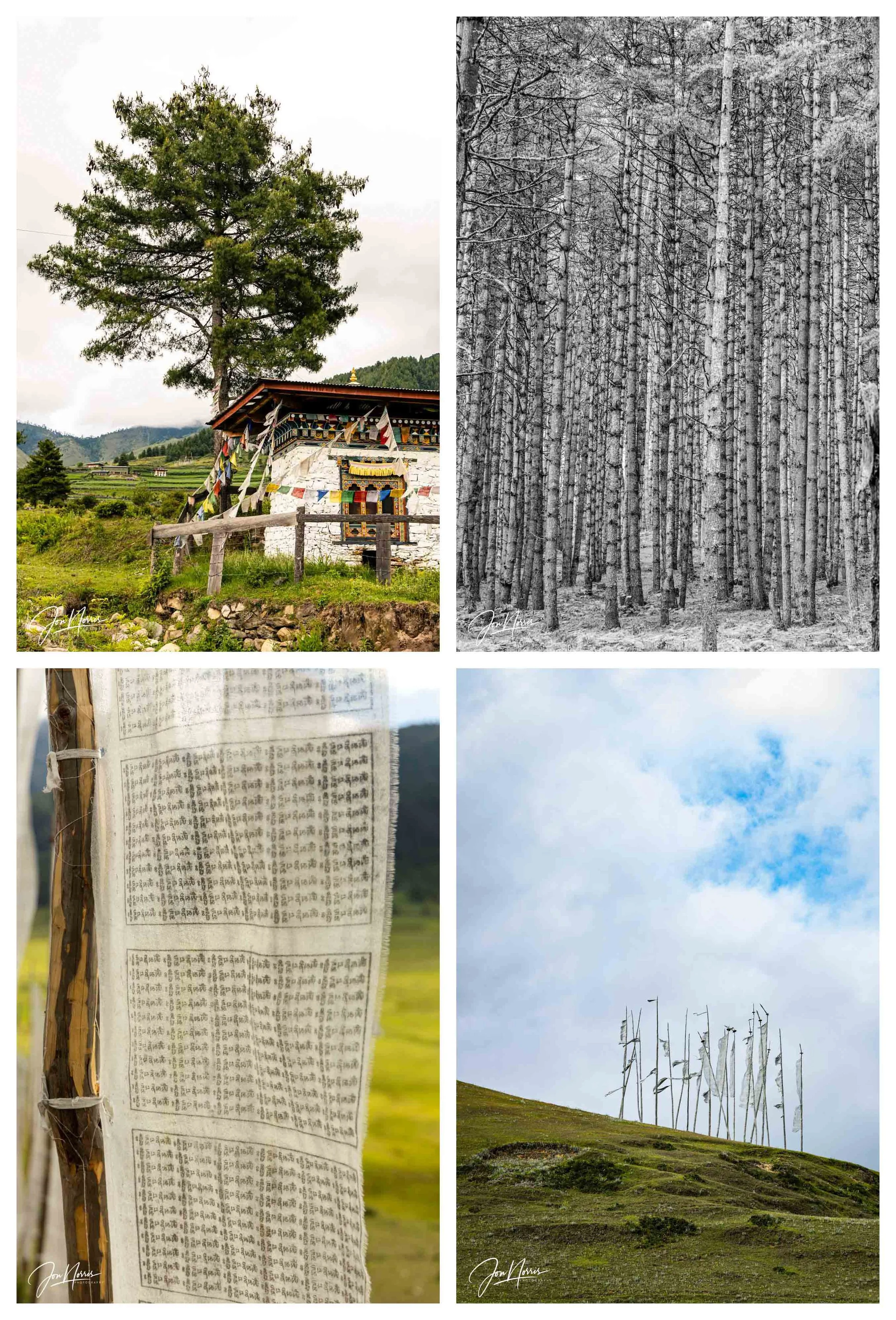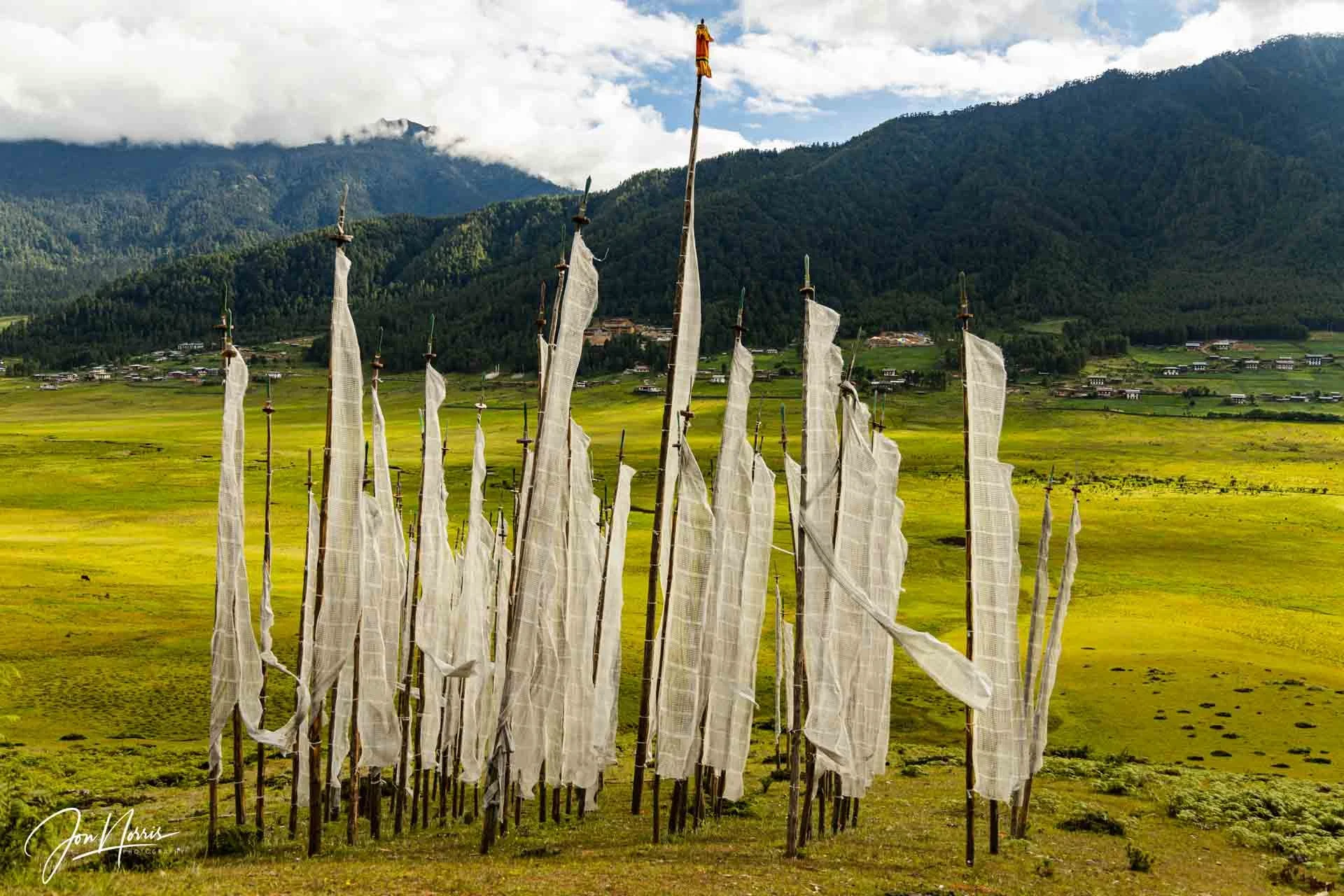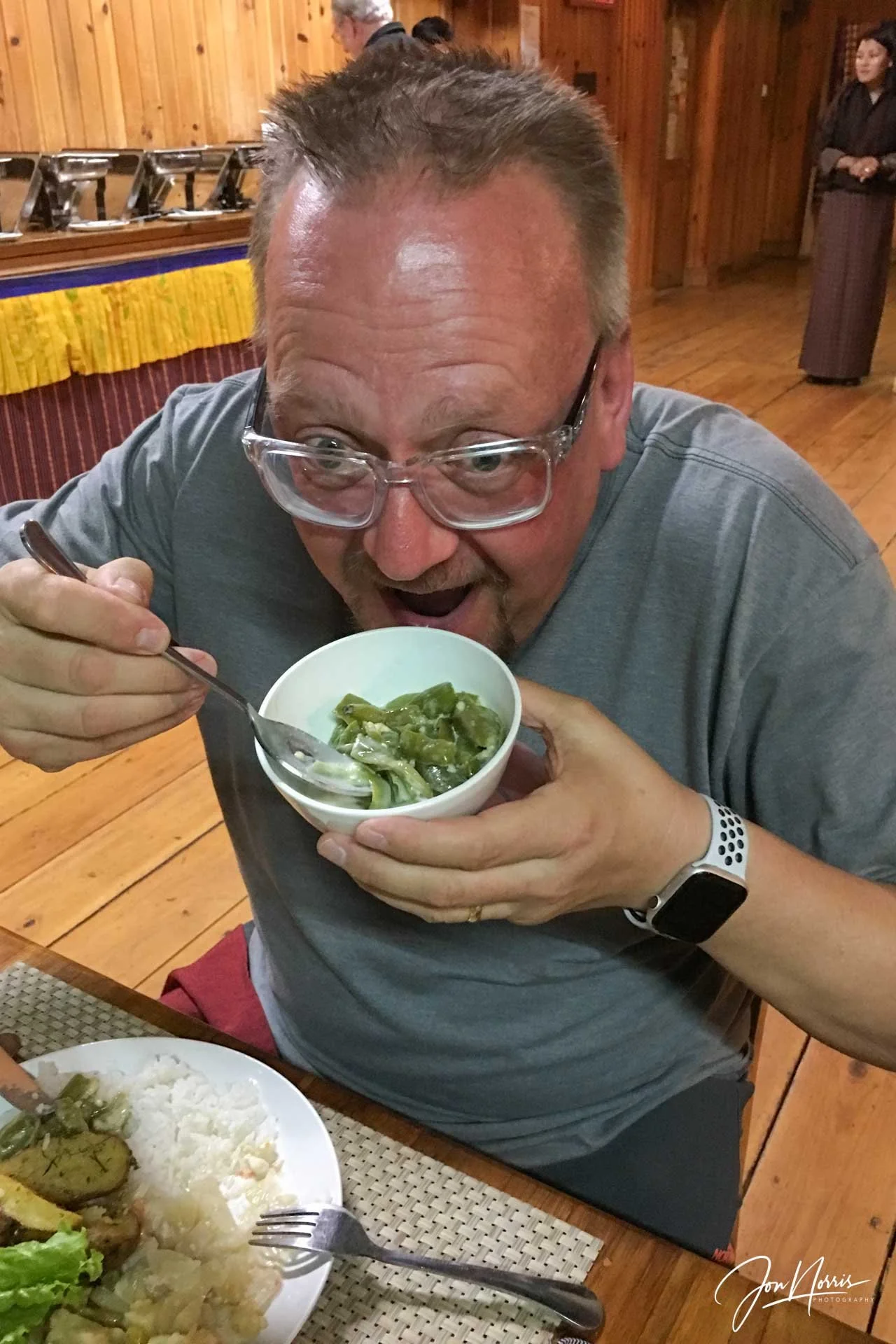A photographic tour of Bhutan (Part 3)
Explore Landscapes #97
The beautiful Punakha and Phobjikha Valleys, getting way to close to a Yak on a wobbly suspension bridge, and eating chili cheese.
The Mo Chhu river in Punakha, Bhutan | © 2019 Jon Norris
The day started with a delicious breakfast at our hotel accompanied by coffee and Karma (our guide) briefing us on what we were going to see on our itinerary.
Not long after leaving the hotel we arrived at our first stop - the Mo Chhu suspension bridge in Punakha.
Mo Chhu suspension bridge in Punakha, Bhutan | © 2019 Jon Norris
I was busy taking photos (as per normal) and had fallen behind the rest of the group.
By the time I got half-way across the prayer-flag adorned suspension bridge, which we needed to cross to reach the trailhead, I was face-to-face with a large yak. I quickly moved to one side of the bridge, while the large beast, led by a farmer, passed by (much too close for comfort). They weren’t phased at all. I was. I thought I was going over the bridge and into the river below.
This was cause for much merriment from my group who had watched the whole thing from the far shore and were laughing loudly as I reached land again.
Once across the bridge we started on the trail up to the Khamsum Yulley Namgyal Chorten. The trail took us steadily uphill and meandered through multiple tiers of rice fields.
We’d arrived at the trailhead after heavy rain that was gradually fading as we walked. There was a heavy mist throughout the valley that was slowly lifting to expose more and more of the countryside around us. The weather was perfect for some atmospheric shots of the valley.
Mo Chhu river valley and rice fields, Punakha, Bhutan | © 2019 Jon Norris
I repeatedly stopped to take photos as we hiked, and every so often had to walk quickly uphill to catch up with my group. I have to say that my group were incredibly accommodating of my photography and regular pauses.
After a couple of miles of meandering trails, we arrived at the ornate entrance doorway that led into the grounds of the Khamsum Yulley Namgyal Chorten.
The entrance to Khamsum Yulley Namgyal Chorten, Punakha, Bhutan | © 2019 Jon Norris
We explored the grounds of the Chorten which were immaculately maintained. Inside the Chorten we climbed up the stairs to the third floor and out onto a terrace that overlooked the valley below.
Khamsum Yulley Namgyal Chorten, Punakha, Bhutan | © 2019 Jon Norris
There was a wonderful view down the valley and along the river that snaked from side to side and into the distance. The mist hung onto the slopes of the valley as the view slowly exposed itself.
The view from the third floor terrace of the Khamsum Yulley Namgyal Chorten, Punakha, Bhutan | © 2019 Jon Norris
Chimi Lhakhang, Punakha, Bhutan | © 2019 Jon Norris
Our next stop was at the Chimi Lhakhang in Punakha. Chimi Lhakhang (also known as Chime Lhakhang or The Fertility Temple) is a sacred Buddhist temple idyllically nestled atop a rotund hill in Punakha district. Today, many newly married and childless couples from all over the world visit the temple to receive fertility blessings.
Chimi Lhakhang was built in 1499 by Ngawang Choegyel, the 14th Drukpa hierarch. However, it was Drukpa Kunley (1455–1529), the maverick saint (also known as the ‘Divine Madman’) who first built a chorten at the site.
Motor-plough drawn cart, Bhutan | © 2019 Jon Norris
We stopped for refreshments and hour or so after leaving Chimi Lhakhang, and watched the world go by as we enjoyed a cold drink and stretched our legs. It was fascinating to see the local Bhutanese using every conceivable type of vehicle, like this motor-plough drawn cart.
Out next stop was the Gangtey Goenpa Monastery in Wangdue Phodrang (the district to the East of Thimphu and Punakha).
Gangtey Goenpa Monastery in Wangdue Phodrang, Bhutan | © 2019 Jon Norris
It was fascinating to get a glimpse into the life of the monks as they worked, prayed, and played. After exploring the monastery we had a beautiful walk downhill through the neighboring forest and into the beautiful Phobjikha Valley.
Phobjikha Valley, Wangdue Phodrang, Bhutan | © 2019 Jon Norris
The forest was densely packed with trees, each of which stood vertically next to its neighbors with very little room between them. As the trail flattened out into the base of the valley, and the forest was behind us, there were multiple locations where tall vertical white prayer banners flapped in the wind.
Phobjikha Valley, Wangdue Phodrang, Bhutan | © 2019 Jon Norris
After a long day of hiking I was more than ready for dinner at our hotel. This last photo is of me tucking into a bowl of chili cheese (Ema datshi).
Enjoying a bowl of chili cheese in Phobjikha Valley
A quick few words about the Bhutanese diet. Rice (red rice), buckwheat, and increasingly corn, are the staples of Bhutanese cuisine. The local diet also includes pork, beef, yak meat, chicken, and lamb (each of which we enjoyed at least once during the trip).
Ema datshi, made very spicy with cheese and chilies, might be called the national dish for its ubiquity and the pride that Bhutanese have for it. We had that with every meal (except breakfast). Dairy foods, particularly butter and cheese from yaks and cows, are also popular, and indeed almost all milk is turned into butter and cheese. Popular beverages include butter tea, black tea, locally brewed ara (rice wine), and beer.
More to come from my photographic tour of Bhutan in part 4.
